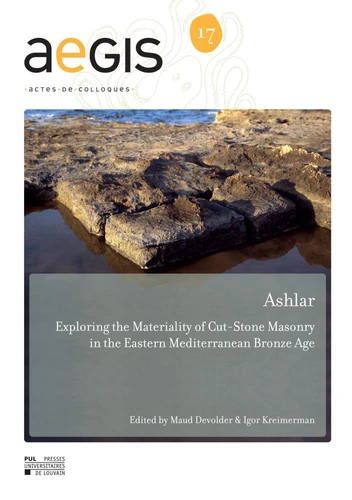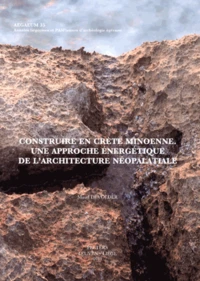Ashlar. Exploring the Materiality of Cut-Stone Masonry in the Eastern Mediterranean Bronze Age
Par : ,Formats :
Disponible dans votre compte client Decitre ou Furet du Nord dès validation de votre commande. Le format est :
- Pour les liseuses autres que Vivlio, vous devez utiliser le logiciel Adobe Digital Edition. Non compatible avec la lecture sur les liseuses Kindle, Remarkable et Sony
 , qui est-ce ?
, qui est-ce ?Notre partenaire de plateforme de lecture numérique où vous retrouverez l'ensemble de vos ebooks gratuitement
Pour en savoir plus sur nos ebooks, consultez notre aide en ligne ici
- Nombre de pages478
- ISBN978-2-87558-965-1
- EAN9782875589651
- Date de parution25/06/2020
- ÉditeurPresses universitaires Louvain
Résumé
This volume focusses on ashlar masonry, probably the most elaborate construction technique of the Eastern Mediterranean Bronze Age, from a cross-regional perspective. The building practices and the uses of cutstone components and masonries in Egypt, Syria, the Aegean, Anatolia, Cyprus and the Levant in the 3rd and 2nd millennium BC are examined through a series of case studies and topical essays. The topics addressed include the terminology of ashlar building components and the typologies of its masonries, technical studies on the procurement, dressing, tool kits and construction techniques pertaining to cut stone, investigations into the place of ashlar in inter-regional exchanges and craft dissemination, the extent and signifi cance of the use of cut stone within the communities and regions, and the visual eff ects, social meanings, and symbolic and ideological values of ashlar.
This volume focusses on ashlar masonry, probably the most elaborate construction technique of the Eastern Mediterranean Bronze Age, from a cross-regional perspective. The building practices and the uses of cutstone components and masonries in Egypt, Syria, the Aegean, Anatolia, Cyprus and the Levant in the 3rd and 2nd millennium BC are examined through a series of case studies and topical essays. The topics addressed include the terminology of ashlar building components and the typologies of its masonries, technical studies on the procurement, dressing, tool kits and construction techniques pertaining to cut stone, investigations into the place of ashlar in inter-regional exchanges and craft dissemination, the extent and signifi cance of the use of cut stone within the communities and regions, and the visual eff ects, social meanings, and symbolic and ideological values of ashlar.




